A café filled with the aroma of coffee is far more than just a place to relax.
It’s where philosophy was debated, ideas collided, and literature quietly took root.
In France, the bond between literary expression and café culture runs deep and inseparable.
This article traces the origins of this relationship—from the intellectual cafés of 18th-century Paris to their lasting legacy in today’s literary world.
As you read, your appreciation for both books and coffee may deepen in unexpected ways.
- How Enlightenment thought and literary movements took root in Parisian cafés
- The cafés frequented by Sartre and Beauvoir as intellectual sanctuaries
- The modern café as a creative space for today’s French writers
- The symbolic role of coffee in storytelling and literary imagination
The Encounter Between French Literature and Café Culture
Behind the flourishing of French literature, cafés have always played a central role.
They were not merely quiet corners for writing but vibrant intersections of thought—spaces where ideas were exchanged, challenged, and transformed.
From the 18th century to the 20th, cafés in France attracted thinkers and writers alike, shaping the course of literature itself.
In this section, we’ll explore how cafés and French literature met, merged, and evolved, tracing their intertwined history through cultural and intellectual milestones.
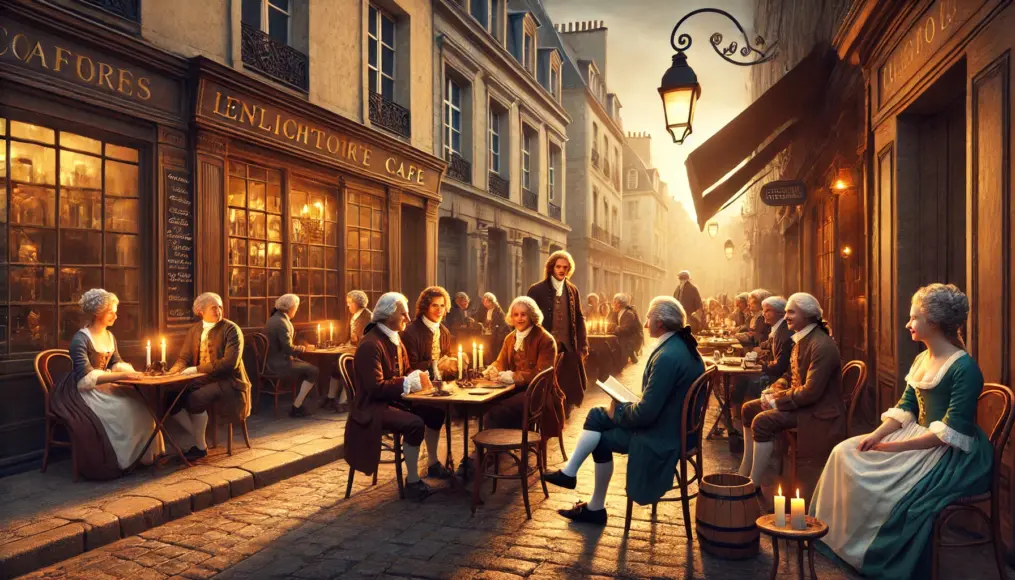
18th-Century Paris: The Birth of Enlightenment Thought and the Café
In 18th-century Paris, cafés began to appear throughout the city—not just as places to drink, but as emerging hubs of intellectual life.
Coffee, with its stimulating properties, offered a clarity of thought that wine did not.
It sparked deeper conversations and sharpened minds.
Parisians gathered to discuss politics, philosophy, and art, and from these conversations came the seeds of Enlightenment thought and even revolution.
- Cafés in 18th-century Paris functioned as early “public spheres”
- They allowed citizens and intellectuals to engage in open, egalitarian dialogue
- Coffee enhanced focus and mental clarity, fueling thoughtful debates
In essence, the culture of discussion and dialogue—critical for any literary movement—was cultivated in these early cafés.
This environment became the foundation upon which French literary brilliance would later thrive.
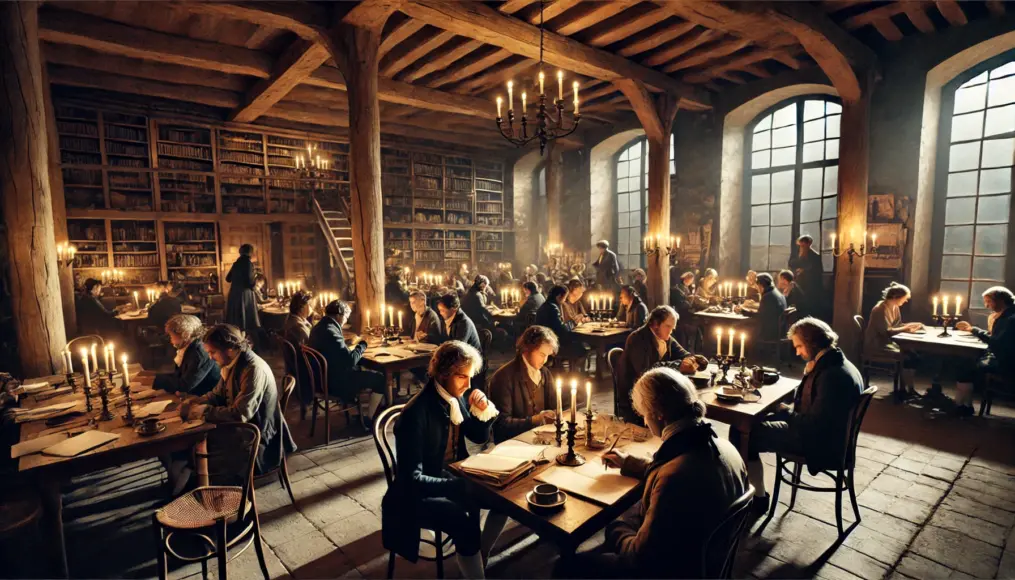
Café de Flore: A Sanctuary for Writers and Thinkers
By the 20th century, Café de Flore in the Saint-Germain-des-Prés district had become a revered landmark in French literary culture.
Thinkers like Sartre and Beauvoir were regulars, using it as a space for both intense philosophical debate and literary creation.
What made this café unique was its blend of tension and freedom.
One person reading a philosophy book could be interrupted by counterarguments from the next table.
A poet’s quiet scribble could spark an impromptu reading aloud.
- Café de Flore was a key hub for 20th-century French intellectuals
- Sartre and Beauvoir wrote and discussed their work here
- It functioned as an open space where creativity and critique thrived side by side
For French literature, the café wasn’t just a place to write alone—it was a shared space where ideas were nurtured communally.
That spirit still lingers in the café culture of France today.
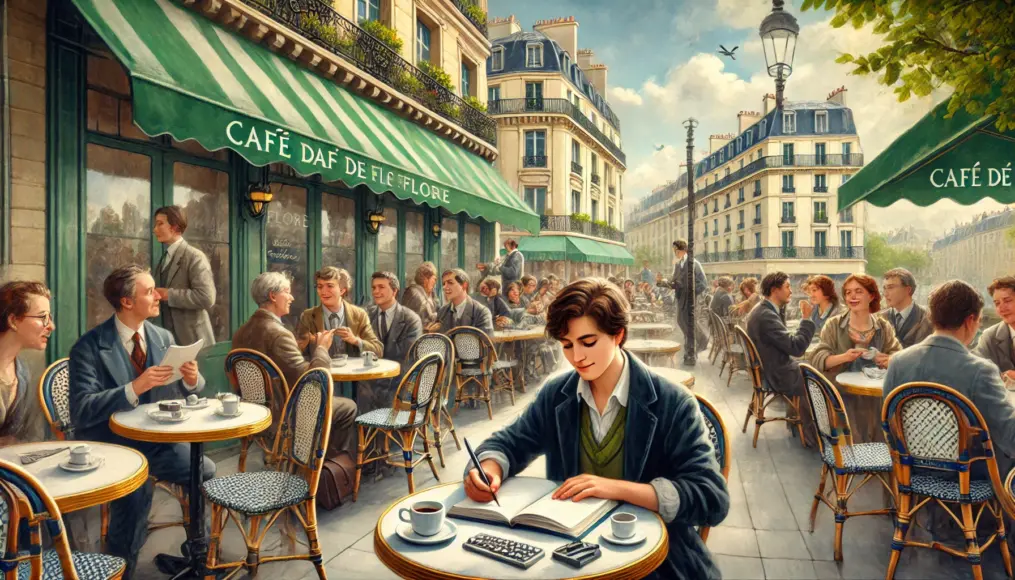
How Cafés Transformed Literature
The connection between French literature and cafés goes beyond mere backdrop.
In fact, the café itself actively influenced the form, tone, and thought processes of the literature created within it.
In this section, we’ll explore how café spaces revolutionized literary style and blurred the lines between public life and private expression.

New Expressions Born in Café Spaces
Unlike a library or private study, a café offers an open and fluid environment.
You hear snatches of strangers’ conversations, catch glimpses of unfamiliar gestures.
It’s a space full of life’s buzz, yet it also welcomes solitude.
This contradictory energy began to influence how literature was written.
Language became more fluid, unbound by rigid structure.
Writers embraced fragmented yet rhythmically authentic prose.
French literature, nurtured in cafés, became a product of its setting—shaped by the atmosphere in which it was born.
- Cafés provided an “open creative environment” rather than a closed space
- Background noise and movement informed the rhythm and realism of the text
- Literary style evolved from fixed structures to fragmented and spontaneous forms
Writing in a café wasn’t just about location—it was a form of participation.
The ambiance itself became part of the creative process.
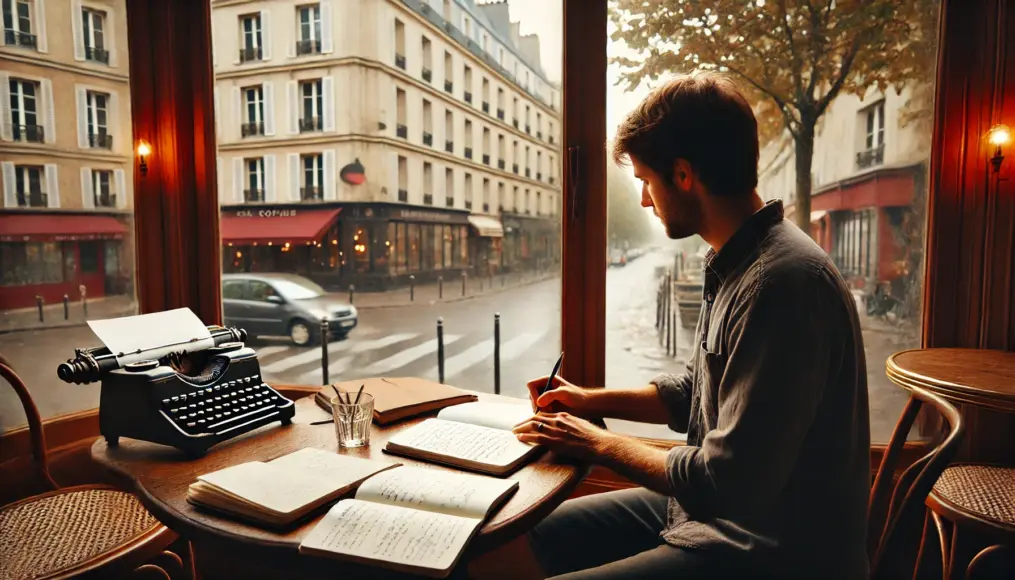
Dialogue and Drafting: Blurring the Line Between Life and Thought
What kept cafés central to the literary world was their unique ability to host both discussion and writing simultaneously.
One might be quietly writing, only to be drawn into a nearby debate moments later.
Sometimes, those very conversations made their way directly into novels, poems, or essays.
In cafés, “thought” and “daily life” blended seamlessly.
A casual chat over coffee could spark a verse, a thesis, or a compelling line of dialogue.
- Cafés functioned as both spaces for deep thinking and social engagement
- Everyday conversations often flowed straight into literary works
- Fragmented ideas from dialogue enriched the emotional and intellectual depth of writing
The words born in cafés felt alive.
They weren’t just written—they were spoken first, carrying the warmth of real voices.
That’s why they resonated so powerfully with readers.
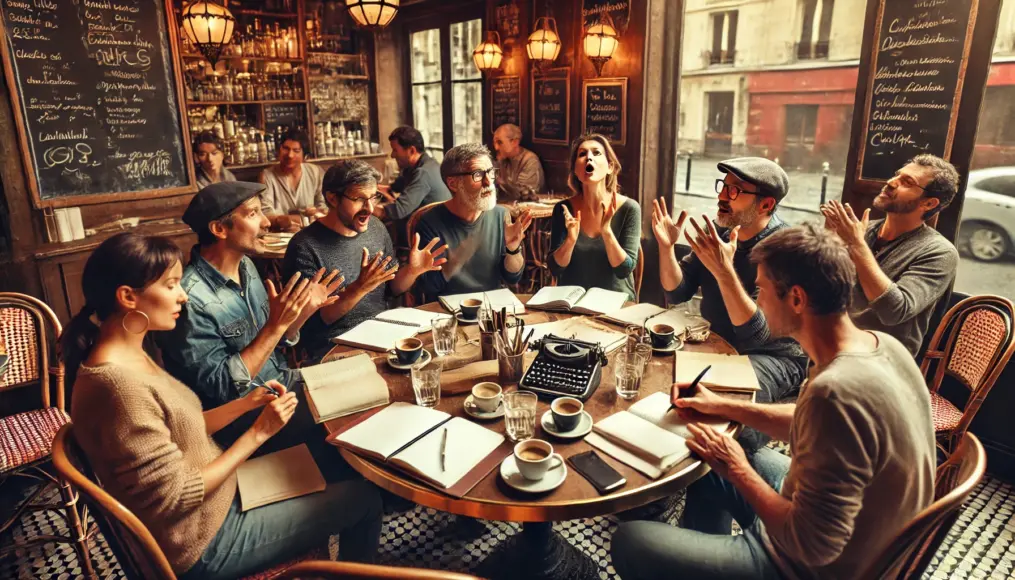
The Current State of French Café Culture and Literature
The relationship between literature and cafés is not just a relic of the past.
It’s a living, ongoing tradition that continues to thrive on the street corners of France.
In this section, we’ll explore how today’s writers use cafés as creative spaces, and how historic cafés preserve and carry forward the legacy of literary culture.

Contemporary Writers and Cafés as Creative Spaces
Even in an age of advanced technology and countless digital tools, many writers still choose to work from cafés.
It’s not just about aesthetics—the rhythm and atmosphere of the space offer a unique kind of mental clarity and creative depth.
Many young authors based in Paris consider cafés their “second study.”
A cup of coffee, combined with the ambient noise of conversation, provides a perfect balance of tension and ease that supports deep focus.
- Many modern writers continue to create in cafés
- Even in a digital era, a physical space helps structure thought
- The sounds, air, and light of a café shape the rhythm of writing
It reminds us that literature is inseparable from its surroundings.
The café remains a spark for creation—not just in the past, but in the present as well.

Tourist-Friendly Historic Cafés and the Preservation of Literary Heritage
Meanwhile, many historic cafés once known as literary hubs are now famous tourist destinations.
Places like Café de Flore and Les Deux Magots attract visitors from around the world hoping to trace the footsteps of Sartre or Hemingway.
Yet these cafés are more than monuments.
They remain active spaces where poets and essayists still gather and work.
Inside, displays of old photographs and replica manuscripts bring the breath of past authors into the present.
- Historic cafés serve as both tourist sites and creative spaces
- Visual exhibits connect visitors to the legacies of literary figures
- They act as “cultural time capsules” where past and present coexist
For literature lovers, visiting these cafés isn’t merely sightseeing.
It’s a powerful experience of encountering the soul of creativity across time.
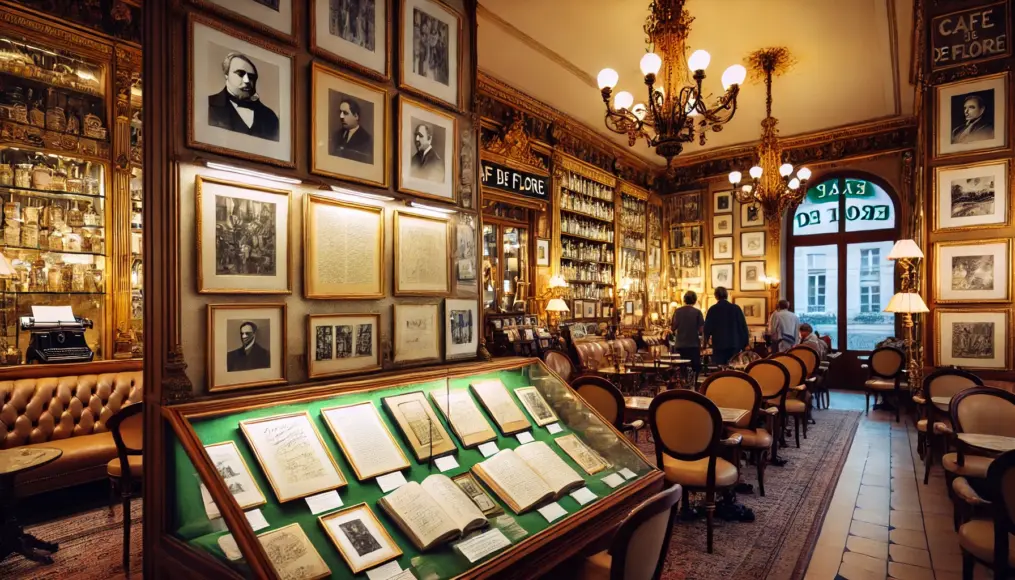
Coffee: The Unsung Protagonist
When we talk about the relationship between French literature and café culture, there’s one element we must not overlook—coffee itself.
Just like the atmosphere and the conversations, coffee has often been both a theme in literature and a silent companion to the writer’s creative process.
Sometimes, it even plays the role of a character, expressing emotions and anchoring scenes with quiet presence.
In this section, we explore how coffee has inspired literary imagination and added depth to countless narratives.
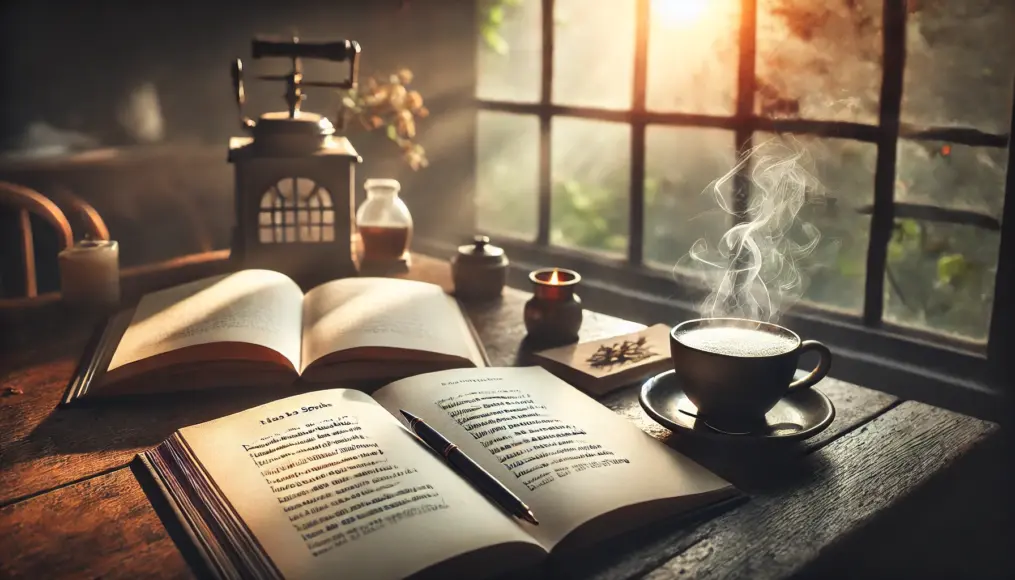
Aroma Through the Filter: Stirring the Senses
The aroma of coffee has an uncanny power to evoke memory and emotion.
The sound of beans being ground, the hiss of hot water, and the rich scent rising in the air—these details become sensory fuel for a writer’s mind.
Many authors have found themselves drifting into story worlds with coffee at their side.
That aroma, subtle yet persistent, often appears in fiction as a gateway to memory, reverie, or emotional reflection.
- The scent of coffee is deeply tied to memory and emotional recall
- For many, brewing coffee is a ritual that signals the beginning of writing
- Aroma serves as a trigger, opening the door to creative flow
In this sense, the aroma of coffee is both a “literary prelude” and a “creative switch.”
It’s there at the moment when feeling begins to take shape as language.
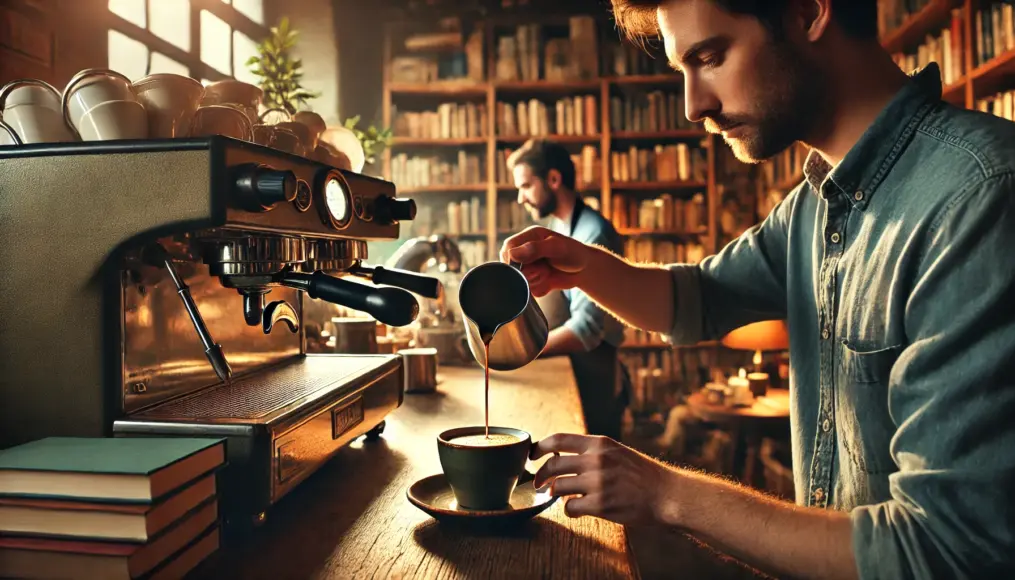
One Cup, Many Stories
In literature, a cup of coffee is rarely just a drink.
It can pause time, carry emotional weight, or act as a symbol for solitude, intimacy, or transition.
It appears beside a morning monologue, in the silence before a farewell, or as a gentle presence in moments of introspection.
That single cup often says what no dialogue could.
- Coffee is used symbolically to express a character’s inner world
- It enhances narrative silence, saying more than words ever could
- The act of drinking becomes a storytelling device in itself
In short, coffee helps create “literary pauses.”
It’s that quiet moment that lingers in the reader’s heart—not because of what’s said, but because of what’s felt through it.
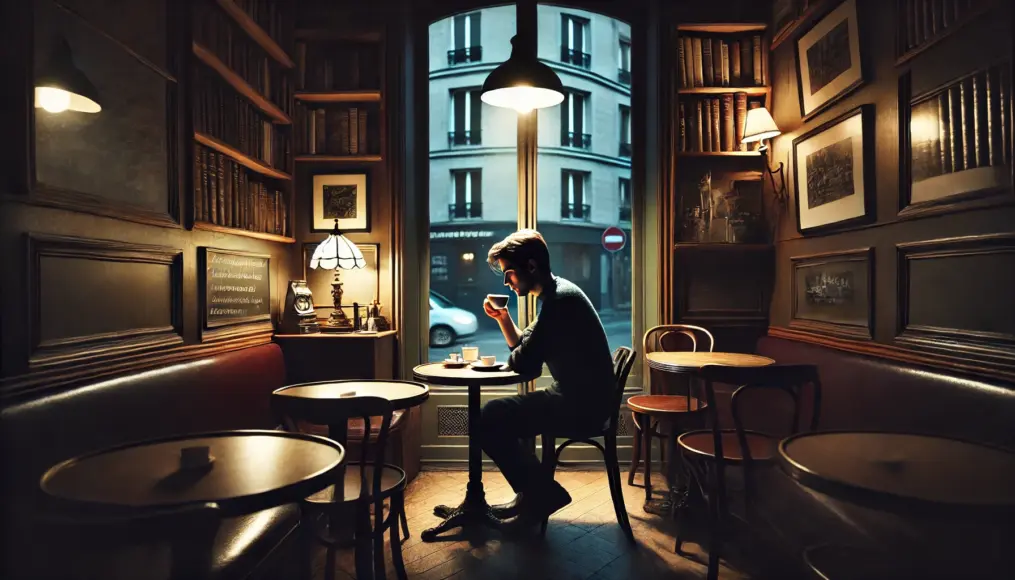
Conclusion: Where Literature, Cafés, and Coffee Quietly Intersect
The relationship between French literature and café culture is more than just historical context.
It’s a living crossroads where people meet, thoughts flow, and stories quietly take shape—often over a single cup of coffee.
These intersections have nurtured literary masterpieces and continue to serve as wells of creative inspiration.
- Since the 18th century, French cafés have been hubs of knowledge and dialogue
- Spaces like Café de Flore offered fertile ground for thinkers like Sartre and Beauvoir
- The openness of café environments fostered new, freer literary expressions
- Today, cafés remain “second studies” for writers seeking creative energy
- Coffee itself adds depth and silence to literature, becoming a quiet yet powerful character
So next time you sip coffee at a café,
you might feel it’s more than just a drink—it could be a bridge to literature and time.
Tell us in the comments: what’s your favorite “coffee moment” from a book you love?














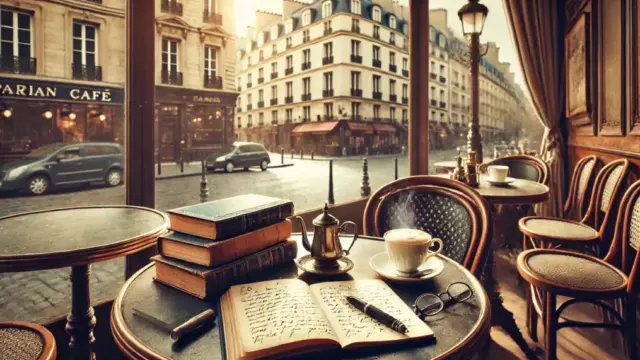







































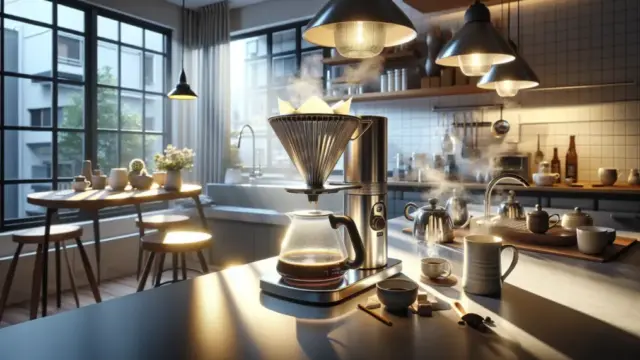












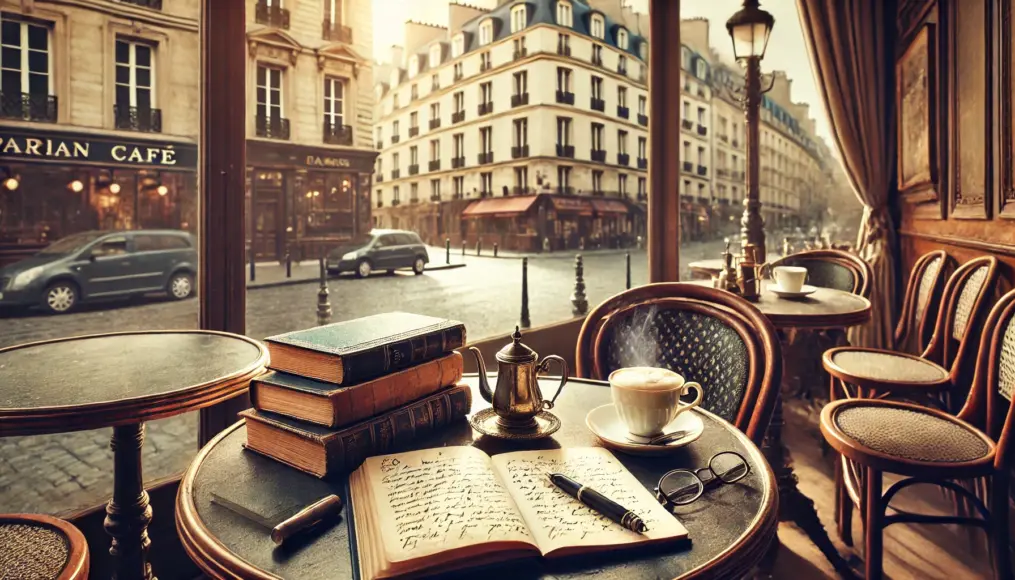


Comment